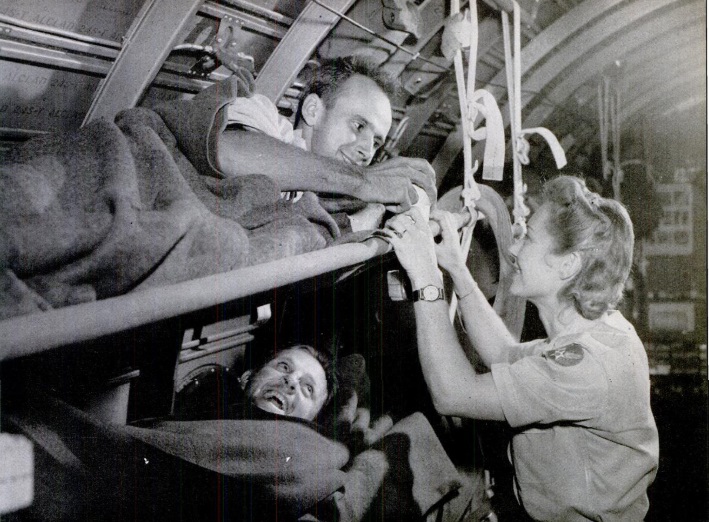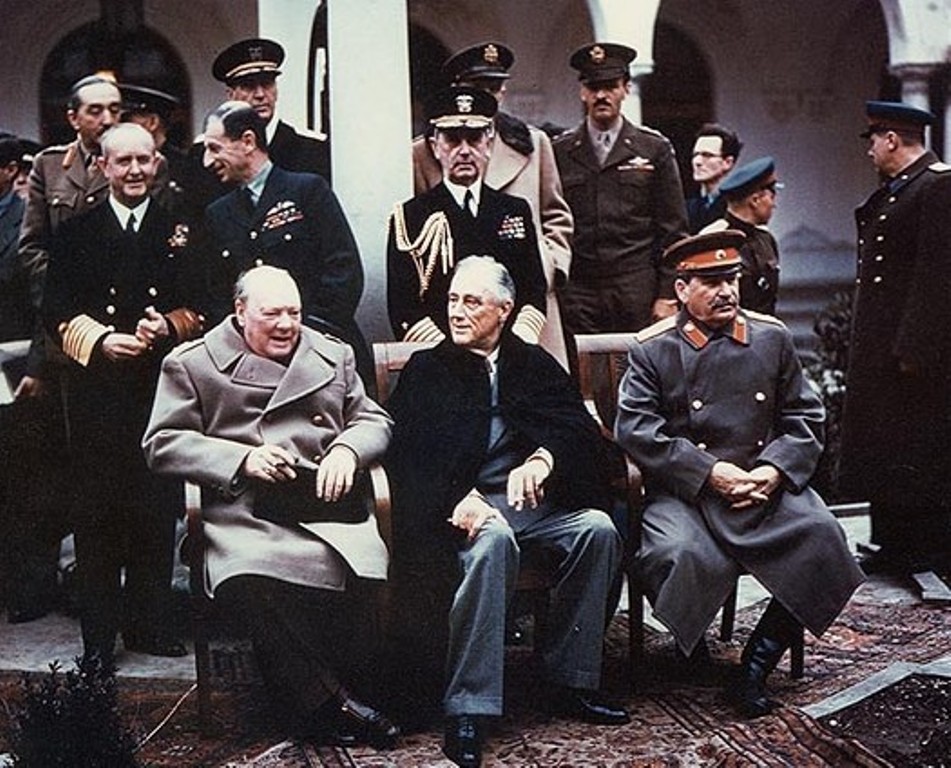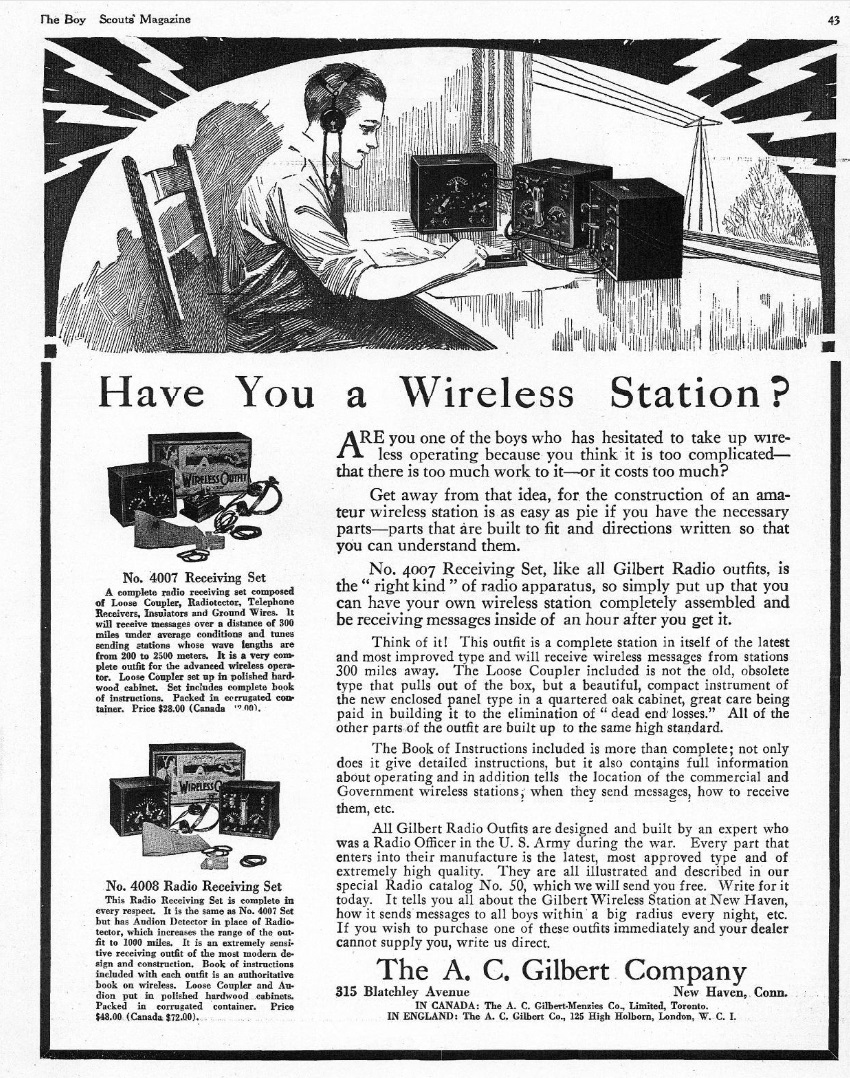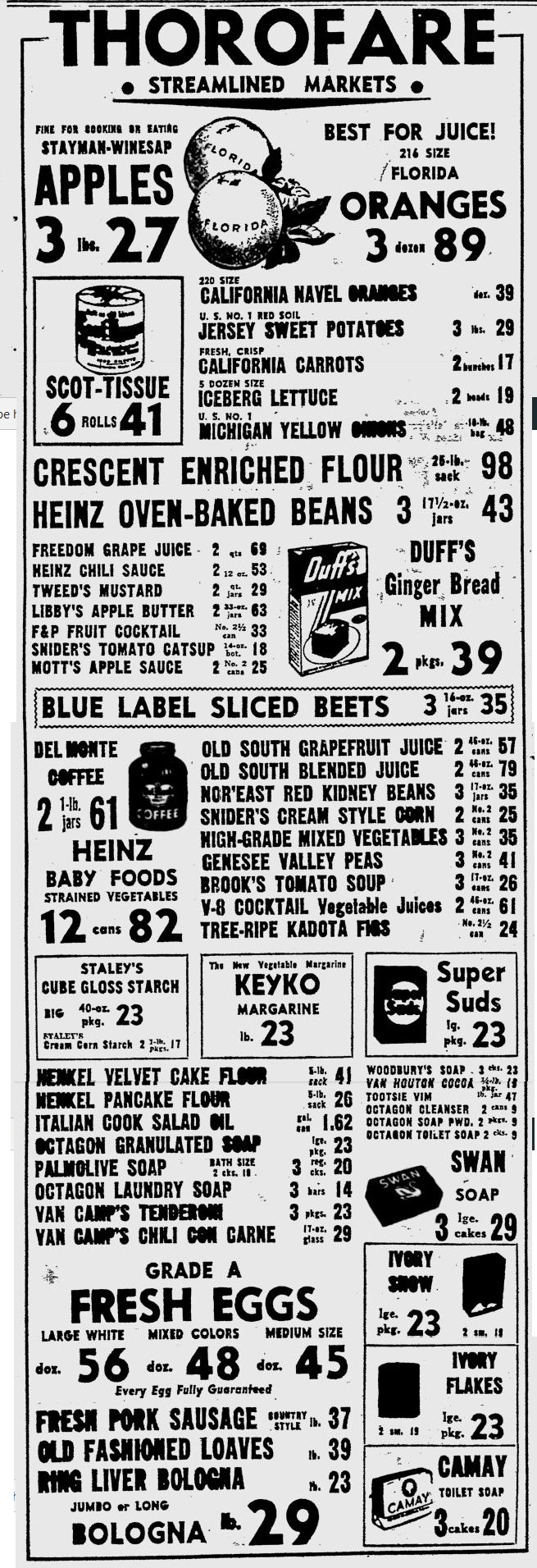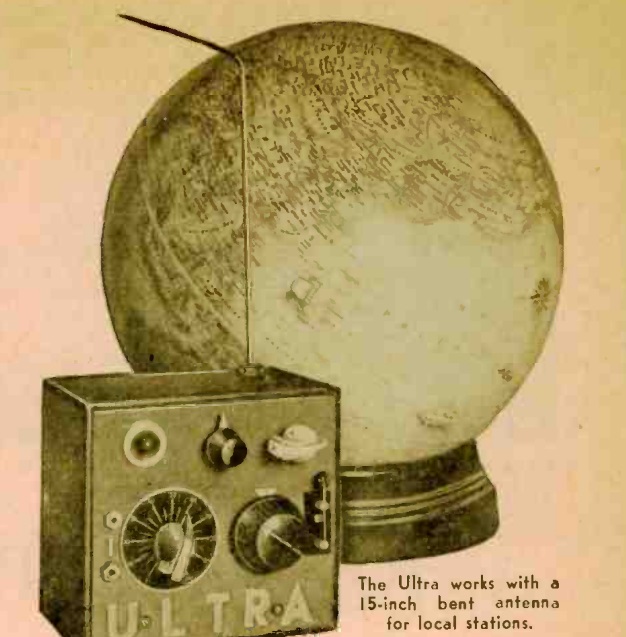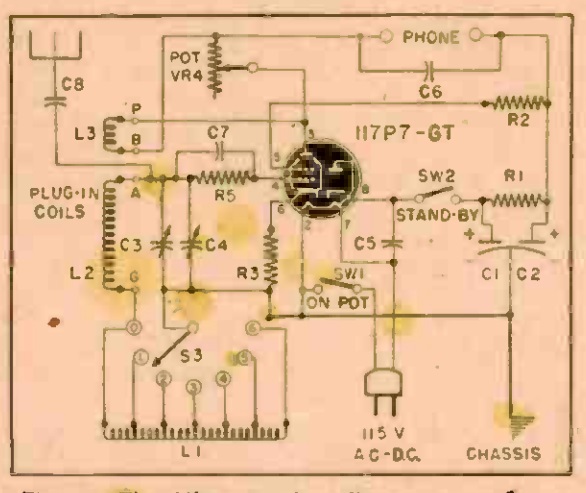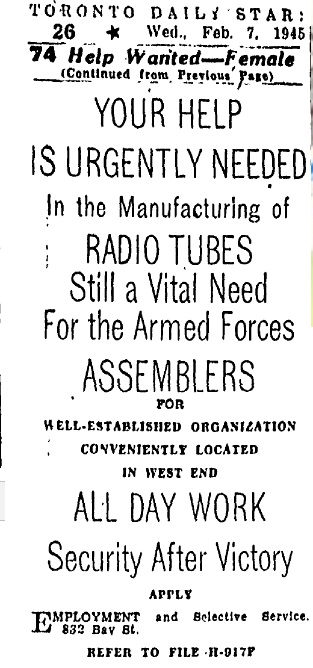 Eighty years ago this month, the February 1940 issue of Radio Retailing carried this ad for the Admiral model 12-B-5, a five tube set that covered both standard broadcast (including police at the top of the dial) and shortwave signals from 5.65 to 17.1 MHz.
Eighty years ago this month, the February 1940 issue of Radio Retailing carried this ad for the Admiral model 12-B-5, a five tube set that covered both standard broadcast (including police at the top of the dial) and shortwave signals from 5.65 to 17.1 MHz.
With Europe at war, this inexpensive set would pull in the news straight from the warring powers. I wasn’t able to find much information about this set, but it looks like an “All-American Five” with the shortwave band added. It probably did an adequate job with the strong stations, and at $12.95, it was modestly priced for a shortwave set.


